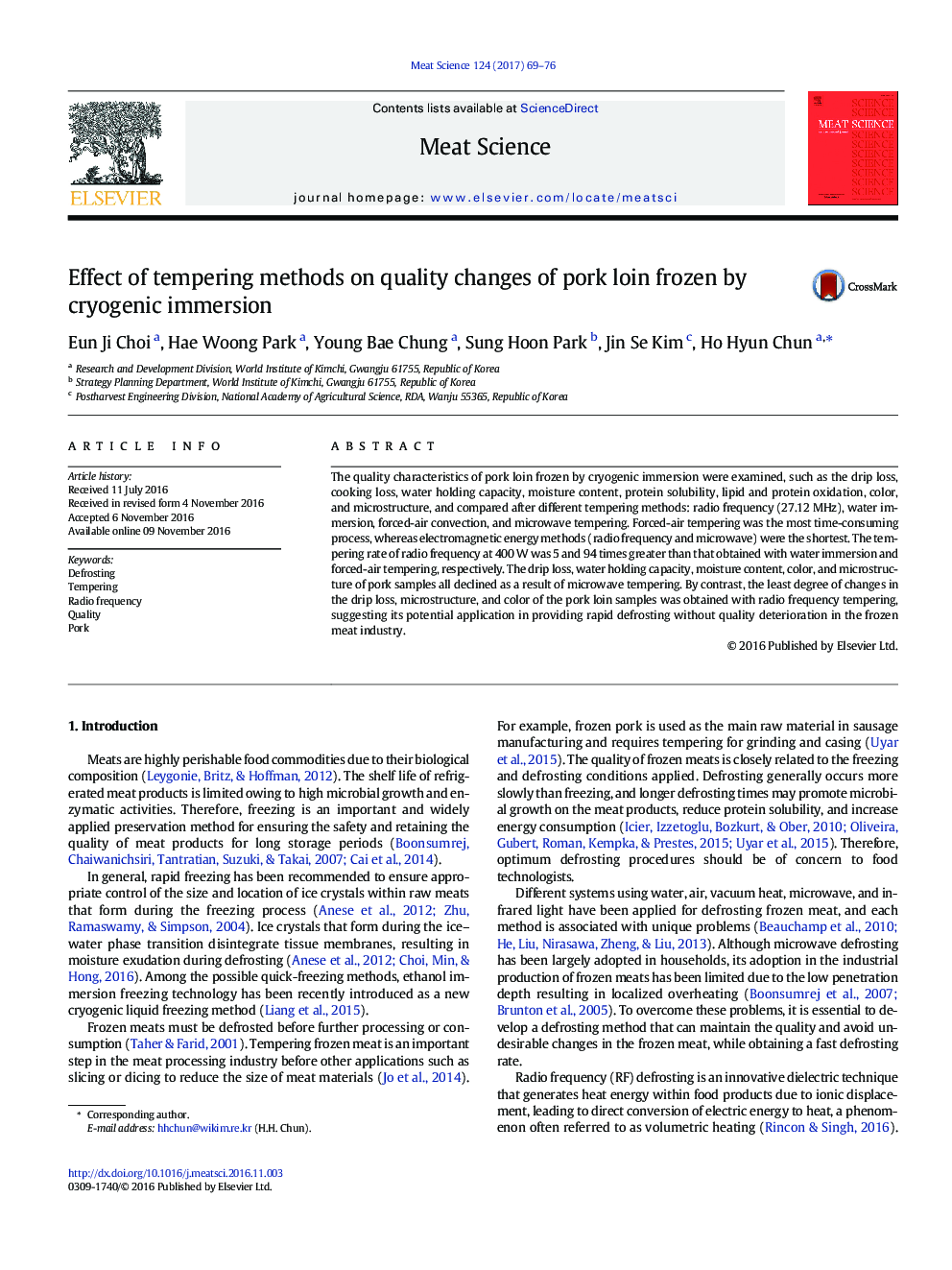| Article ID | Journal | Published Year | Pages | File Type |
|---|---|---|---|---|
| 5543326 | Meat Science | 2017 | 8 Pages |
Abstract
The quality characteristics of pork loin frozen by cryogenic immersion were examined, such as the drip loss, cooking loss, water holding capacity, moisture content, protein solubility, lipid and protein oxidation, color, and microstructure, and compared after different tempering methods: radio frequency (27.12Â MHz), water immersion, forced-air convection, and microwave tempering. Forced-air tempering was the most time-consuming process, whereas electromagnetic energy methods (radio frequency and microwave) were the shortest. The tempering rate of radio frequency at 400Â W was 5 and 94 times greater than that obtained with water immersion and forced-air tempering, respectively. The drip loss, water holding capacity, moisture content, color, and microstructure of pork samples all declined as a result of microwave tempering. By contrast, the least degree of changes in the drip loss, microstructure, and color of the pork loin samples was obtained with radio frequency tempering, suggesting its potential application in providing rapid defrosting without quality deterioration in the frozen meat industry.
Related Topics
Life Sciences
Agricultural and Biological Sciences
Food Science
Authors
Eun Ji Choi, Hae Woong Park, Young Bae Chung, Sung Hoon Park, Jin Se Kim, Ho Hyun Chun,
